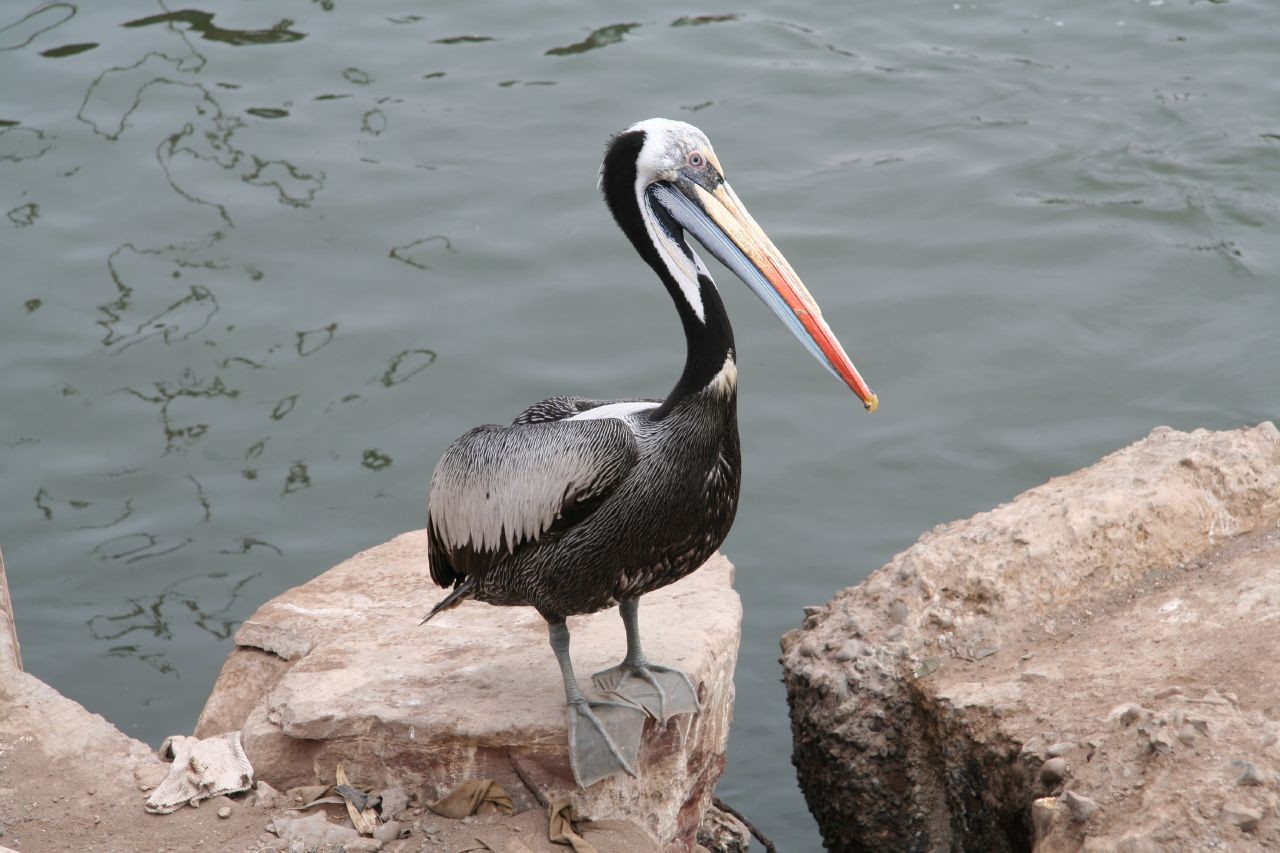Peruvian Pelican
A species of Pelicans Scientific name : Pelecanus thagus Genus : Pelicans
Peruvian Pelican, A species of Pelicans
Botanical name: Pelecanus thagus
Genus: Pelicans
Content
Description People often ask General Info
 Photo By Alastair Rae , used under CC-BY-SA-2.0 /Cropped and compressed from original
Photo By Alastair Rae , used under CC-BY-SA-2.0 /Cropped and compressed from original Description
The Peruvian pelican (Pelecanus thagus) is a member of the pelican family. It lives on the west coast of South America, breeding in loose colonies from about 33.5° in central Chile to Piura in northern Peru, and occurring as a visitor in southern Chile and Ecuador. These birds are dark in colour with a white stripe from the top of the bill up to the crown and down the sides of the neck. They have long tufted feathers on the top of their heads. It was previously considered a subspecies of the brown pelican (Pelecanus occidentalis). The Peruvian pelican is considerably larger, ranging from about 5 to 7 kg (11–15 lb) in weight, 137 to 152 cm (4.5–5.0 ft) in length and with a wingspan of about 228 cm (7.5 ft). Compared to the brown pelican, it also has proportionally longer crest feathers, as well as differences in the colours of the gular pouch, beak, scapulars and greater wing coverts. The main breeding season occurs from September to March. Clutch size is usually two or three eggs. Eggs are incubated for approximately 4 to 5 weeks, with the rearing period lasting about 3 months. This bird feeds on several species of fish. Unlike the brown pelican, it never dives from a great height to catch it food, instead diving from a shallow height or feeding while swimming on the surface. On occasion it may take other food items, such as nestling of imperial shags, young Peruvian diving petrels, gray gulls and cannibalize unrelated chicks of its own species. Its status was first evaluated for the IUCN Red List in 2008, being listed as Near threatened. 
Size
1.5 m
Colors
Black
Gray
White
Nest Placement
Ground
Feeding Habits
Peruvian Pelican primarily consumes small fish and occasionally feeds on young seabirds. With their adept plunge-diving method, they forage mostly during the day. They exhibit specialized feeding behaviors, often swallowing large prey whole due to a flexible throat pouch.
Habitat
Peruvian Pelican typically dwell in strictly marine environments, favoring shallow inshore waters along coastlines, including bay areas and estuaries. These birds avoid the open sea, preferring to inhabit remote and undisturbed locations such as guano islands, cliffs, and arid coastal regions for breeding. The species' habitat is characterized by flat, bare islands or coastal areas with a clear need for isolation from both human disturbance and terrestrial predators. Commonly, peruvian Pelican may also be observed in close proximity to fishing ports, scavenging fish scraps and resting on fishing vessels.
Dite type
Piscivorous
People often ask
General Info
Feeding Habits
Bird food type
Species Status
Not globally threatened.
Scientific Classification
Phylum
Chordates Class
Birds Order
Pelicans and Relatives Family
Pelicans Genus
Pelicans Species
Peruvian Pelican